#slavic bird pastries
Text
Hagging Out: March
--

My celebration of the Equinox was two fold. Most importantly I drown a Morana dolly in the creek in the woods behind the house, and secondly I baked.
The drowning of Morana (or Marzanna, or Marena, or Mara, or Smrtka . . . ) is an old Slavic tradition and the beginning of my devotional year. On the fourth or fifth Sunday of Lent, depending on the region, an effigy of the goddess is thrown into the river to drown; sometimes she is also burned. We know that people have been drowning effigies of the goddess since at least 1420, when it was forbidden by the Catholic church, but probably for much longer. It is a misconception by many that Morana is only a goddess of winter and death.
“However, many historical sources and traces of her cult (particularly in the West Slavic beliefs) show clearly that the cold winter is only one of the faces of this goddess. After getting rid of the winter effigy, another similar one was being brought up in a procession around the villages and fields - it was a symbol of spring, the same goddess being reborn after the winter phase and waking up nature’s vital strength for the upcoming growing season. Many of such informations survived in countless folk songs and rituals.” --Lamus Dworski
This is the first year that I drown a doll that I made the preceding year. Before this I always made a doll at the equinox to drown. This year the doll that I made to symbolize Morana’s rebirth last year was used in every seasonal ritual and in the end drown. I plan on doing this yearly going forward.

This year’s dolly will be showing up in many, many posts.

As part of the death and rebirth ritual last year I made a set of Morana prayer beads representing the dark half of the year. This year I made a set representing the light half.

Another addition to the ritual this year was spending at least a half hour every night the week before I drown Morana in meditation and prayer with her, annointing her with oils and holy water and burning incense.

The second thing I did to celebrate the equinox was bake! First I baked Slavic spring birdies to “release” into the wild. I released the majority of them the Thursday before I drown Morana.
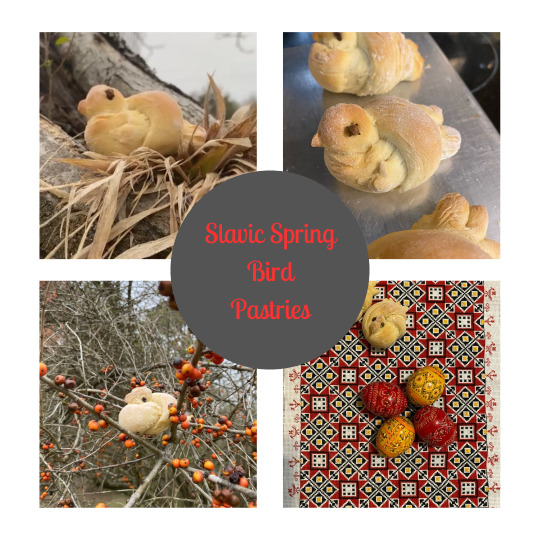
“Even before the leaves bud out, as the snow begins to thaw, one must invite–indeed coax–the spring to arrive. If one simply waited, Spring (being willful) might not choose to come, and then, with last year’s food bins already almost empty, one could not survive. To bring the spring proactively, Russian mothers baked bird-shaped pastries in early March and their children clambered about setting these little larks and snipes out like duck decoys on the rooftops, fence posts, and snowless patches of ground, hanging them from trees and bushes or even tossing them into the air, meanwhile singing such songs as:
Larks, Larks, Give us Summer,
We’ll give you Winter,
There’s no food left for us”
–“The Dancing Goddesses” by Elizabeth Wayland Barber
In an earlier time in Ukraine and other Slavic nations, on the Holy Day of the 40 Martyrs, (March 9, O.S; March 22, N.S.), the return of the birds in the spring was celebrated with special spring songs (vesnianky). Birds made of dough were also baked representing the larks that were migrating back to the north.
I started releasing the birds into the wild with my friend @msgraveyarddirt a few years ago. I was delighted to find a picture in a book on the traditions of the Znojmo region of Moravia (where my great-grandparents are from) earlier this year and realize that the birds are indeed one of those pan Slavic traditions.

This morning before I drown Morana, I woke up at 3 am and could not fall back asleep. So I decided to bake. I began making my first manzanec and while it was rising went out to do my Morana ritual.
“Pavla Velickinova, the head of the public diplomacy department at the Embassy of the Czech Republic in Washington, D.C., says mazanec is one of the oldest documented Easter foods in Czech history. It comes from the expression, "mazat," which means to anoint, she says. This is why it's baked on White Saturday, the day that reminds Czechs of the last rites of Christ.
This tradition of making mazanec as an Easter treat dates back to the 15th century, says Karen Von Kunes, a professor of Slavic language and literature at Yale University.
But even before that, she says, people across Europe baked this kind of bread around springtime. "In Europe, it was a custom to celebrate spring with making this ... type of pastry," she says.” --NPR
The site where I found the recipe said that the cross represented the sun, unlike the NPR quote above. In my personal devotions I could certainly see it representing the wheel of the year. The dough is nearly the same as the vánočka (Czech braided Christmas bread) that I made for štědrovečerní večeře (Czech Christmas Eve dinner). The smell of lemon peel and vanilla is forever forward going to be related to the holidays.
@msgraveyarddirt thank you as always for hosting #haggingout. I’m glad we revisited this theme as my yearly rituals are constantly growing and evolving. ( I in no way expect you to publish this until the 29th--I just wanted to get it all down while it was fresh in my mind.)
51 notes
·
View notes
Text
DEITY MASTERLIST
(PART TWO)
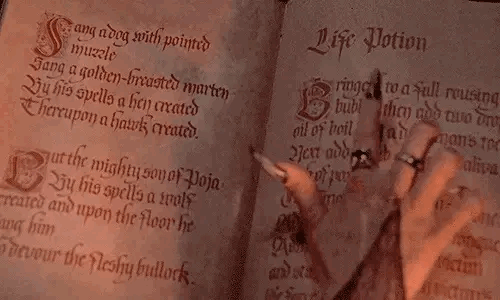
📿 Kuan Yin
Goddess of: mercy and compassion
Culture: Chinese/Buddhist
Symbols: vase, rosary, willow branch, fish basket, and pearls
Plants: lotus, willow, and bamboo
Animals: horse, peacock, dragon, and birds
Colours: white
Tarot: Judgment
Offerings: oranges, pomegranates, spices, oolong tea, incense, and love and compassion for both yourself and others
🌱 Lada
Goddess of: spring, beauty, love, and fertility
Culture: Slavic
Symbols: Lada Star, bells, and Spring Equinox
Plants: linden, dandelion, peony, and birch
Animals: lark, deer, ant, and eagle
Colours: red and white
Tarot: Page of Cups and The Lovers
Offerings: honey, music, mead, apples, sweets, lemon balm, cherries, and chestnuts
🌉 Lilith
Goddess of: love, demons, beauty, wisdom, life, rebirth, fertility, motherhood, inner-strength, illumination, mysteries, spiritual initiation, the night, and The Evening Star
Culture: Demonic
Symbols: sword, pentagram, scythe, moon, dragon, snake, crossroad, dark moon, and pentacle
Plants: apple, poisonous plants (belladonna, hemlock, and mugwort), sandalwood, rose, dandelion, red hibiscus, witch hazel, lilac, and patchouli
Animals: black cats, snakes, owls, dogs, spiders, bats, and goats
Colours: red, black, purple, blue, green, silver, and gold
Tarot: The Devil
Offerings: black candles, black stones, or black crystals, honey, champagne, seductive perfume, fancy jewelry, tea, exercise, having sex and/or masterbating, swords and daggers, pomegranates, dark chocolate, sex toys or other items related to sex and pleasure, dragon’s blood, flowers and herbs: lilies, red roses, sage, basil, mugwort, and rose, dancing, red wine, clay, depictions of owls, snakes, cats, dogs, bats, dragons, and spiders, mirrors, apples, red or black silk, and poetry.
🤘 Loki
God of: mischief and trickery
Culture: Norse
Symbols: serpents, wolves, ax, raven, masks, fire, Bjarken and Logr Runes, fishing nets, earthquakes, infinity snake and ouroboros, number 8, chaos star, runes that spell out his name: Laguz, Othala, Kenaz, Isa as well as the rune Hagalaz, and Helmet of Dread or the Helmet of Horror
Plants: mistletoe, birch, common Haircap moss (Loki’s Oats), bentgrass (Loki’s Grass), cinnamon, dandelion, beech, blackthorn, elder, elm, ivy, juniper, mullein, thistle, mint, holly, cedar, juniper, elder, clove, patchouli, tobacco, willow, and yew
Animals: salmon, crows, , ravens, falcon, vulture, flies, goats, flea, horses, wolves, foxes, and spiders
Colours: green, gold, black, violet, yellow, orange, and red
Tarot: The Fool, The Tower, The Devil, The Wheel of Fortune, Page of Cups, and Seven of Swords
Offerings: candles, especially black ones, incense, a musky or mysterious scent would be appropriate, red fruits or flowers, gems or metals, herbs, such as dill, ginger, and mugwort, art or poetry, toys, such as the ones you used to play with as a kid, acts of chaos, subversion, or mischief, flowers: daisies, roses, and lilies, crystals, hanging mistletoe at Yuletide, foods and drinks: sweet foods, alcohol, spicy rum, candy, mulled wine, chocolate with nuts or funny names, spongecake, coffee or other caffeinated beverages, honey, and pastries, knives and daggers, doing something you are scared of (safely), and cinnamon.
🌅 Lucifer
God of: illumination, light, darkness, change, rebirth, challenges, innovation, logic, truth, knowledge, wisdom, strategy, persuasion, revolution, luxury, pleasure, freedom, The Arts and The Morning Star (“Morning Star” is another name for the planet Venus)
Culture: Demonic, Pagan, and Greco-Roman
Symbols: Sigil of Lucifer, The Morning Star, violins and fiddles, dragons, wings, serpents, black goats, inverted pentagram, light, and the pentacle.
Plants: belladonna, mulberry, patchouli, myrrh, min, tobacco, marigold, lilies, hyacinth, rosemary, and black poppies, lavender, mint, blackberries, sage, apples, pomegranates, lilac, rose, black pepper, hyssop, gardenia, geranium, garlic, yarrow, and cypress.
Animals: black animals in general, snakes, spiders, ravens, wolves, dragons, eagles, crows, goats, bats, rats, moths, flies, peacocks, insects, and swans.
Colours: blue, red, black, gold, emerald green, and silver.
Tarot: The Devil.
Offerings: candles or torches, sweet treats like dark chocolate or pastries, red, black, or dead roses, incense like sage or cinnamon, red wine, whiskey, especially Jack Daniels, champagne, pomegranate/pomegranate juice, black tea, especially earl grey, cooked goat meat, venison, apples, honey, good quality cigars, tobacco, daggers and swords, silver rings, emeralds and emerald jewelry, goat horns, black feathers, seductive colognes, crow skulls, bone dice, devotional poetry and artwork, and classical music, especially violin.
🦁 Lugh
God of: the Sun, The Arts, storms, The Harvest, oaths, Kings, justice, craftsmanship, smithcraft, light, and warriors
Culture: Celtic
Symbols: spear, harp, and slingshot
Plants: apple, oak, hazel, holly, marigold, goldenrod, sunflower, carnation, rose, gorse, bay, basil, allspice, rosemary, and cinnamon
Animals: lion, horse, raven, stag, crow, hound, and lynx
Colours: brown, gold, yellow, green, red, and blue
Tarot: The Emperor, Justice, Strength, The Sun, and Suit of Wands
Offerings: wine, mead, apple cider, corn, bread, apples, berries, potatoes, beer, harvested fruits and vegetables, corn dolls, cloves, gorse flowers, and handmade crafts
🪐 Ma'at
Goddess of: truth, justice, cosmic order, harmony, wisdom, morality, and balance
Culture: Egyptian
Symbols: scales, ostrich feathers, Ankh
Plants: papyrus
Animals: vulture and ostrich
Colours: purple and black
Tarot: Justice, Temperance, and Judgment
Offerings: no drugs and alcohol, cold water, tea with milk, dates, plums, fish, chicken, olive oil, vinegar, hummus, barley biscuits, reeds, gold jewelry, and white linen.
🦭 Manannan Mac Lir
God of: the sea, weather, navigation, and Guardian of the Otherworld
Culture: Celtic
Symbols: cups, cloak, a silver branch with three golden apples on it, and mermaids
Plants: alder, apple, hazel, blackberry, bramble, reed, meadow grass, yellow flowers, and seaweed
Animals: horse, pig, cow, seal, crane, swan, boar, dog, dolphin, sea horse, and whale
Colours: blue, silver, and gold
Tarot: The Chariot
Offerings: yellow flowers, sea water, bread, ale, and mead.
🌒 Máni
God of: personification of the Moon and protector of children and the mentally ill
Culture: Norse
Symbols: silver, the Moon, and astrology
Plants: jasmine, carnations, night-blooming flowers, and aromatic flowers
Animals: horse, rabbit, and wolf
Colours: blue, silver, black, lavender, and white
Tarot: The Moon
Offerings: peppermint-flavored sweets, peppermint Tea, angel food cake, relaxing tea, and salt
♟️ Marduk
God of: justice, compassion, war, healing, magic, storms, and agriculture
Culture: Mesopotamian
Symbols: lightning, war chariot, and weapons
Plants: grain
Animals: horse, dog, dragon, and eagle
Colours: gold
Tarot: The Emperor
Offerings: beer, ale, daggers, golden jewelry, bread and grains, coffee, artwork and poetry, feathers, meat, and fruit.
🕯️ Medea
Goddess of: Witch and Priestess of Hecate, invoke for justice, vengeance, and protection
Culture: Greek
Symbols: poisons, cauldrons, and golden fleece
Plants: juniper, olive, and wolf’s bane
Animals: dragon and snake
Colours: gold and white
Tarot: The Magician
Offerings: wine, frankincense, milk, honey, poisons, artifacts of Witchcraft, flowers, and snake and dragon imagery.
🤰 Mokosh
Goddess of: spinning, weaving, fiber arts, moisture, shearing, protection, childbirth, spell casting, fate, fertility, life, death, and rebirth
Culture: Slavic
Symbols: mokosh tones, rain, solar and earthly symbols
Plants: local seasonal plants
Animals: sheep, cat, and horse
Colours: gold, white, and red
Tarot: The Empress
Offerings: personal needlework, wool and flax, grains and bread, salt, oilseeds, dairy, berries, eggs (especially Pisanki), porridge, milk, honey, herbs, fruits, vegetables, a lock of your own hair, and locally sourced seasonal crops.
☃️ Morana
Goddess of: winter, death, and rebirth
Culture: Slavic
Symbols: poppets (spell dolls) and water
Plants: evergreen, berries, grass, rosemary, cypress, wormwood, mandrake, and elderberry
Animals: snake
Colours: white, red, black, and grey
Tarot: Death
Offerings: tea, water, rocks, bones alcoholic beverages, bread, oats, seeds, fruit, and homemade foods and baked goods.
🪄 Morgan le Fay
Goddess of: Witchcraft
Culture: Welsh/Arthurian
Symbols: artifacts of Witchcraft
Plants: honeysuckle, henbane, reed, aspen, oak, and willow
Animals: crow, crane, raven, black dog, horse, cow, and wolf
Colours: red, black, and lavender
Tarot: The Moon and The Magician
Offerings: red ribbons, crow and raven feathers, whiskey, rum.
✊ Nemesis
Goddess of: retribution, fairness, and Punisher of Hubris
Culture: Greek
Symbols: sword, lash, dagger, scales, and apple branch
Plants: Apple Tree, Thistle
Animals: griffin and goose
Colours: red, black, silver, gold
Tarot: Justice
Offerings: wine, olive oil, water, fruit, honey, milk, feathers, apple seeds, apple blossoms, bones, scales, chains, daffodils and narcissus flowers.
😷 Nergal
God of: war, death, plagues and disease
Culture: Mesopotamian
Symbols: lion-headed Mace and sword
Plants: thistle, grapefruit, and pomegranate
Animals: lion, bull, and bat
Colours: red, black, silver, and gold
Tarot: The Tower, The Devil, and Death
Offerings: animal bones, thorn branches, bitter lemonade, absinthe, and pomegranate juice.
🏋️ Nike
Goddess of: victory
Culture: Greek
Symbols: balm branch, wings, a wreath, sash, and lyre
Plants: palm tree and laurel tree
Animals: horse
Colours: silver, gold, and blue
Tarot: Wheel of Fortune, Justice, and Strength
Offerings: feathers, trophies, medals, palm branches or leaves, and athletic equipment.
🪴 Ninhursag
Goddess of: the Earth, motherhood, childbirth, fertility, nourishment, agriculture, and vegetation
Culture: Mesopotamian
Symbols: omega symbol, bow, and mace
Plants: all grown vegetation
Animals: Cow, Lion, Fish, Serpent
Colours: green, gold, white, and silver
Tarot: The World, The Empress, Suit of Pentacles, and Queen of Pentacles
Offerings: wine, beer, fresh water, cooked fish, eggs, vegetarian foods, bread, honey, butter, myrrh, and all flowers.
🐚 Njord
God of: the sea, the wind, abundance, and wealth
Culture: Norse
Symbols: ships
Plants: avens, ferns, oak, oak moss, polypody, verbena, rosemary, reeds, and bay
Animals: fish and aquatic creatures
Colours: blue
Tarot: King of Cups
Offerings: fish, seafood, pork, chocolate coins, sea salt chocolate, dark beer, gin, golden items, beads, shells, tobacco, and fishing gear.
🌃 Nut
Goddess of: night
Culture: Egyptian
Symbols: Ankh and water pot
Plants: sycamore and fig
Animals: boar, cow, vulture, and hippo
Colours: dark blue
Tarot: The Star
Offerings: milk, cool water, star-shaped foods, blue goldstone, and blue flowers
🌌 Nyx
Goddess of: the night
Culture: Greek
Symbols: crescent moon, mist, darkness, and stars
Plants: poppies, night blooming lilies, moon flowers, and gladiolus
Animals: owl, crow, and bat
Colours: dark blue and black
Tarot: The Star
Offerings: milk, black coffee or tea, dark chocolate, silver jewelry, dragon fruit, dew gathered before the sun rises, wine, dark beer or liquors, and starry and celestial items.
📖 Odin
God of: wisdom, healing, death, royalty, the gallows, frenzy, knowledge, war, battle, victory, sorcery, poetry, and Runic alphabet
Culture: Norse
Symbols: valknut, right-legged horse (Sleipnir), wolves, ravens, spear (Gungnir), and the Othala Rune
Plants: mugwort, plantain, wormwood, chamomile, pine, apple, fennel, juniper, elfwort, and wotan’s herb
Animals: wolf, raven, snake, bear, and horse
Colours: grey, deep blue, and black
Tarot: The Hermit, The Magician, and The Hanged Man
Offerings: red wine, mead, beer, ale, quality alcohol, whiskey, smoked salmon, red meat, beef, leeks, asparagus, garlic, and honey
💦 Ọṣun / Oshun
Goddess of: water, purity, fertility, love, sensuality, freshwater, wealth, diplomacy, and The Osun River
Culture: Yoruba
Symbols: seashells, and amber beads
Plants: cinnamon, sunflowers, oranges, yellow squash, marigold, pumpkin, rosemary, and lantana
Animals: peacock, vulture, catfish, river fish in general, cricket, leopard, and crocodile
Colours: white, gold, amber, yellow, and coral
Tarot: The Empress
Offerings: honey (taste before you offer it) , bowl of water, flowers, seashells, beauty items, chamomile tea, cooked shrimp and spinach, yellow and orange fruits and vegetables, sliced orange drizzled with tasted cinnamon honey.
⚰️ Osiris
God of: the Underworld, death, resurrection, fertility, and agriculture
Culture: Egyptian
Symbols: crook and flail, atef crown, ostrich feathers, mummy gauze, and djed
Plants: willow, tamarisk tree, and many types of houseplants
Animals: bull, ostrich, and dog
Colours: black and green
Tarot: The Emperor, The Hierophant, The Lovers, The Hanged Man, Death, and Judgment
Offerings: green and black crystals, bread, beer, beef, bird meat, and nice clothing
🌫️ Ọya
Goddess of: weather, death and rebirth, a psychopomp, and patron of the Niger River
Culture: Yoruba
Symbols: lightning, sword, machete, and fly-whisk
Plants: akoko tree, camwood, camphor, cypress, marigold, and mimosa
Animals: water buffalo, antelope, sheep, and locust
Colours: purple, burgundy, and the rainbow
Tarot: Strength, The High Priestess, and The Empress
Offerings: starfruit, black-eyed peas, plums, purple grapes, mine eggplants is a traditional offering (or one eggplant sliced into nine pieces), and red wine
🐐 Pan
God of: the wild, shepherds, flocks, rustic music, fertility, hunters, mountains, forests, and meadows
Culture: Greek
Symbols: panpipes
Plants: Coriscan Pine, Water-reed, Pine Trees
Animals: goat
Colours: green, brown, and purple
Tarot: The Fool, The Lovers, The Devil, King of Pentacles, and Page of Pentacles
Offerings: pine cones, pine branches, animal bones, musical instruments (especially Woodwinds), milk, honey, and lamb or goat meat
🌋 Pele
Goddess of: volcanoes, fire, Land lightening
Culture: Hawaiian
Symbols: volcano, fire, and lava
Plants: ohi’a lehua, lehua lower, strawberry, sugar cane, tobacco, coconut, and pineapple
Animals: Hawaiian honeycreeper, sea turtle, fish, and white dogs
Colours: red, orange, yellow, green, and black
Tarot: The Tower and Suit of Wands
Offerings: fruits, flowers, forest plants, berries, vegetables, gin, and cigars
⚱️ Persephone
Goddess of: the Underworld and spring
Culture: Greek
Symbols: pomegranate, grain, torch, and flowers
Plants: asphodel wheat, willow, narcissus, lily, ivy, lily of the valley, daisy, and lavender
Animals: deer, bat, black ram, parrot, and monkey
Colours: green, black, light blue, purple, magenta, indigo, and yellow
Tarot: The Hermit, The Hanged Man, Death, Judgment, and Knight of Pentacles
Offerings: pomegranates/pomegranate juice, honey, floral tea, breads and sweets, flower crowns or arrangements, dark chocolate, flowers, crushed mint, animal bones, jewelry, and/or your artwork
🌊 Poseidon
God of: the sea, water, horses, and earthquakes
Culture: Greek
Symbols: trident
Plants: pine tree and wild celery
Animals: fish, dolphin, horse, and bull
Colours: blue, teal, green, and silver
Tarot: King of Cups and Suit of Cups
Offerings: ocean water, honey, olive oil, seaweed, white wine poured into water, wild celery, homemade seafood, seashells, sea salt, coral, mint, and sand
☀️ Ra
God of: creator god, and the sun
Culture: Egyptian
Symbols: sun disk, ankh, , and sceptre
Plants: citrus fruits, marigold, sunflower, papyrus, daisy, and lotus
Animals: falcon, lion, and eagle
Colours: yellow, gold, orange, red, and white
Tarot: The Emperor and The Sun
Offerings: fruit juice, citrus fruits, honey, water, beer, wine, bread, barley, figs, dates, chocolate, chicken or duck, beef, and frankincense.
🚢 Rán
Goddess of: the sea
Culture: Norse
Symbols: Fishing Nets, Stormy Seas
Plants: beech, buckthorn, elder, elm, ivy, juniper, willow, and yew
Animals: aquatic Animals
Colours: black an sea-green
Tarot: Queen of Cups
Offerings: clean up the ocean, seashells, fishing with a net, seafood, gold, coins, sea rocks, flowers, sand, seawater, bread? cakes, and mead
🐎 Rhiannon
Goddess of: the moon, horses, songbirds, wind, gates, and horseshoes
Culture: Welsh
Symbols: the moon, horseshoes, waning moon phases, gates, the winds, and the number 7
Plants: cedar, pine, narcissus, daffodils, pansies, rosemary, sage, bay, lavender, and all white flowers
Animals: horse, frog, dog, songbird, dragon, badger, and hummingbird
Colours: green, silver, black, white, grey, red, maroon, and brown
Tarot: The Moon
Offerings: soft-sounding music, a white candle with the number 7 carved into it, white flowers, apples, willow, ivy, evergreens, caring for horses, caring for dogs, and studying liminal spaces and astral work
💀 Santa Muerte
Goddess of: healing, protection, financial wellbeing, and the afterlife
Culture: Mexican
Symbols: scythe, globe, scales of justice, and oil lamp
Plants: fresh flowers, apples, and marigolds
Animals: owl, dogs, cats, dove, crows, and snakes
Colours: red, white, black, blue, and green
Tarot: Death
Offerings: cash, cigars, apples, tequila, cannabis, fresh water, candles, candy, fruit, roses, and bread
🌙 Selene
Goddess of: the Moon
Culture: Roman
Symbols: crescent, torch, chariot, billowing cloak, bull, stars, moon, horse, lunar cycle, torch, and bull horns
Plants: willow, moonflower, lavender, wisteria, oak, lilac, birch, rose, dandelion, and jasmine
Animals: horse, bull, mule, and ox
Incense: frankincense, rosemary, guaiac, orris root, and tonka bean
Colours: silver, blue, white, and grey
Tarot: The Moon, The Star, and Temperance
Offerings: white foods, moon water, dew, glitter/shiny objects, olive oil, flowers, fruit, moon-shaped things, water, honey, nephalia (wineless libation), milk, statues of horses, cakes, and crystals (moonstone, quartz, selenite, and pearl)
🦁 Sekhmet
Goddess of: war, destruction, healing, divine wrath, fire, and the sun
Culture: Egyptian
Symbols: the sun, scimitar, ankh, the desert, and pomegranates
Plants: carnation, rose, cloves, cinnamon, juniper, and orange blossoms
Animals: lion and cobra
Colours: red, gold, yellow, and white
Tarot: Strength, The Tower, and The Sun
Offerings: red wine, rum, beer, meats, bones, tobacco, wild cat skulls, weapons like daggers and swords, pomegranates, spicy foods, gold Jewelry, red Flowers, milk, blackberries, raspberries, mushrooms, and bread
💣 Set
God of: the sky, storms, the desert, disorder, war, foreigners, and a trickster God
Culture: Egyptian
Symbols: was sceptre and ankh
Plants: lettuce
Animals: hippopotamus, crocodile, scorpion, snapping turtle, wild pig, and donkey
Colours: red
Tarot: The Chariot, Death, and The Devil
Offerings: beer, whiskey, red wine, spicy foods, red meats, lettuce, shellfish, maces and daggers, bird eggs, cherries, dark chocolate, and shiny things
🪞 Sif
Goddess of: grain and fertility
Culture: Norse
Symbols: golden hair, loom, and mirror
Plants: birch, chamomile, fir, hawthorn, mugwort, rose, and willow
Animals: songbirds
Colours: gold and green
Tarot: Suit of Pentacles and Queen of Pentacles
Offerings: beer, honey, mead, grain, and bread
🎿 Skaði
Goddess of: winter, wilderness, mountains, bowhunting, and skiing
Culture: Norse
Symbols: skis, bow and arrows, snow, mountains, frost, and snowshoes
Plants: beech, blackthorn, elder, elm, ivy, juniper, mullein, and willow
Animals: wolf
Colours: white and brown
Tarot: The Hermit and Temperance
Offerings: vodka, traditional Scandinavian foods, meat from hunted animals (rabbit, deer, etc.), animal pelts, animal bones, and snow Water
🌞 Sol / Sunna
Goddess of: the Sun
Culture: Norse
Symbols: the Sun and gold
Plants: chamomile, cinnamon, corn, daisy, marigold, citrus fruits, rosemary, sunflower, and wheat
Animals: horse
Colours: gold, red, yellow, orange, white, and green
Tarot: The Sun
Offerings: mead, honey, bread, cider, and fruit juice
🪦 Thanatos
God of: personification of death
Culture: Greek
Symbols: sword, inverted torch, theta, wreath, wings
Plants: poppy and cypress
Animals: butterfly
Colours: black, silver, white, and purple
Tarot: Death
Offerings: (traditional liquid offerings are poured into the ground and food is buried), red wine, olive oil, water, honey, poppy seeds, black tea, dark chocolate, feathers, animal bones, snake skin, and graveyard dirt (collected respectfully)
🍃 The Dagda
God of: fertility, agriculture, strength, magic, druidry, wisdom, father-figure, King and Druid
Culture: Celtic
Symbols: club, cauldron, and harp
Plants: grains and oats
Animals: pig and bull
Colours: black, silver, white, and purple
Tarot: Strength, Wheel of Fortune, The World, King of Pentacles, King of Wands
Offerings: Porridge, Mead, Milk, Honey, Pork, Beef, Mutton, Music, and Laughter
Offerings: honey, olive oil, sweets, flowers, herbs, plants, bread, wheat, fruit, sunflower oil, beer, mead, spring water, vegetables, grains, and baked goods
🔮 The Morrigan
Goddess of: magic, battle, life and death, sovereignty, fresh water, prophecy, and fate
Culture: Celtic
Symbols: cloak, spear, chariot, sword, and shield
Plants: willow, aspen, rowan, snapdragon, hawthorn, yew, belladonna, mugwort, and nightshade (do not consume, handle with care!)
Animals: crow, raven, horse, eel, serpent, and wolf
Colours: red, black, white, blue, and green
Tarot: Suit of Swords, Queen of Swords, Justice, and Death
Offerings: red meat, red wine poured into the ground, apples, mead, milk, whiskey, storm water, crow feathers, knives and daggers, and artwork
🌩️ Thor
God of: thunder, lightning, strength, protection, fertility, masculinity, and protector of humanity
Culture: Norse
Symbols: Mjölnir
Plants: oak, garlic, onion, gorse, thistle, hawthorn, leeks, houseleek, mountain ash, hazel, pine, acorns, and oak moss
Animals: goat and bull
Colours: red, white, gold, and blue
Tarot: Strength and The Chariot
Offerings: hearty foods with lots of meat or onions, mead, beer, flattery, oak, whiskey, coffee, and honey
✒️ Thoth
God of: knowledge, wisdom, writing, mathematics, science, magic, truth, integrity, time, and the moon
Culture: Egyptian
Symbols: scales, papyrus scroll, stylus, crescent moon, and a pen
Plants: papyrus and sweet flag
Animals: ibis and baboon
Colours: white, blue, and teal
Tarot: The Magician, The Hierophant, The Star, and The Moon
Offerings: black tea, water, honey, blackberries, apricots, salmon, tuna, oranges (and orange-flavoured things), walnuts, cashews, quills, fountain pens, leather-bound books and journals, books you think he’d enjoy, silver, poetry, dark chocolate, whiskey, gin, mead, mint tea, and moon water
🗡️ Tyr
God of: war, lawgiver, justice, oaths
Culture: Norse
Symbols: weapons like arrows and spears
Plants: flowering spurge, holly, wolfsbane, and monkshood
Animals: wolf, bear, and eagle
Colours: red, silver, grey, and gold
Tarot: King of Swords
Offerings: wine, strong beer, salt, honey, bread, grains, beef, pork, and potatoes
🐄 Veles
God of: the Underworld, Earth, water, music, magic, trickery, cattle, and wealth
Culture: Slavic
Symbols: the symbol of Veles
Plants: willow
Animals: cow, bear, snake, wolf, dragon, and owl
Colours: gold, yellow, and red
Tarot: The Magician, The Hierophant, The Star, and The Moon
Offerings: cooked corn, bread, herbs (especially basil), wooden flutes and string instruments, black wool or fur, things carved from wood, coins, chicken, mistletoe, and music,
🌧️ Zeus
God of: King of the Gods, the sky, weather, law, order, justice, hospitality
Culture: Greek
Symbols: lightning bolt, cloud, sceptre, throne, and aegis
Plants: oak, olive, wild celery, artichoke, white poplar, and linden tree
Animals: eagle, bull, cuckoos, and swan
Colours: gold, yellow, blue, white, purple, and silver
Tarot: The Emperor, Justice, Wheel of Fortune, King of Swords, and The Fool
Offerings: wine, olive oil, water, honey, milk, red meat, bread and cakes, rainwater, golden objects, crowns, scales, eagle feathers, oak branches and leaves, beef or mutton, whiskey, and cinnamon.
#fyp#fypシ#fypシ゚viral#fypage#fyppage#tumblr fyp#satanism#satanist#deity#deity work#deity worship#occult#information#long post#gods#goddesses
19 notes
·
View notes
Text
You scroll, you scroll. There's a video titled "Interview with Eleanor Bessermann at Cafe Berio - Berlin (2042)" with 3.2k views, looks interesting enough. It's a tripod shot of two people sat at an old fashioned looking cafe table, like in tumblr memes about slavic men smoking cigarettes and drinking coffee outside in 2° weather. These two are having coffee. The telltale crumbs of a chocolate croissant are noticeable on the small plate towards the right side of the table, yet the pastry itself appears to have already been consumed.
On the left sits a balding man, he appears to have the irrepressible urge to smile. All the skin around his eyes crinkles together behind his thick prescription glasses. He greets the viewer and introduces himself as the creator of some artistic endeavors, and introduces Eleanor Bessermann and thrusts the microphone at her. Her hair is long and pitch black, with a few grey streaks. Suddenly it dawns on her that it's her turn to talk and she frantically takes her hands out of her pockets to lean forward into the microphone, she announces "Hey there, my name is Bread"
The microphone moves lazily between them as they go through some fan submitted questions. The noise of chirping birds and passers by cloud the soundscape and some words get lost here in there. Sometimes they talk over each other and the microphone has to be awkwardly handed back and forth to try and collect everything being said. Some questions are answered with a single quippy fun sentence and Bread looks very pleased with herself. She's beaming, she looks almost amused, like as if everything being said tickles her immensely, and at times she can't stop herself from leaving the short quippy answer by itself. In the questions where a single sentence isn't enough, her descriptions drag on, often times overlapping with themselves. As the explanations drag on her joy even seems to slowly disappear, Like a little nerdy kid becoming uncomfortable in the process of explain their bad joke.
They move on to some questions from the presenter, he asks questions about the process of making art, and Eleanor has lots to say. They trade thoughts back and forth about mediums and messages, textures, and emotions, love, heart, sincerity. Both of them are far too scatterbrained, it's clear, their points feel strung together and abstract, yet not without merit. They speak towards the human condition, yet not about it. Finally they both agree that they don't have anything they can add that wouldn't be a repetition of a point that's already been made, even if there have also been multiple repetitions already, so. The presenter asks the final question "So, any idea what your next book is gonna be about?"
Bread gets so excited about this question that they fail to answer it for a couple moments "Ok, look, so. I've had my penis for 40 years now, and I think I'm done, I think I'm ready for the next thing. And I've always kinda felt that like a core facet of what's wrong with how we as a society look at gender related stuff, is that 1 we see the phallus as a dangerous thing and 2 we see vaginoplasty as a loss, when it's actually clearly more like a transformation. Like the beauty of vaginoplasty is that your genitals fully stay your genitals like it's all the same stuff still, you've just moved it around a little bit so you can have it like you want it. And I think like the fact that we see vaginoplasty as a loss just is so indicative about our fear of the unknown and of change and of uncertainty, like there's so much change, like the whole movie Annihilation is inside a neopussy. So the point that I'm getting at is that, everything is scheduled I am getting myself a vagina, and I'm gonna write a psychedelic mind-bending novel about how cool it was once I'm done with recovery and it's gonna make 1,000,000€ and I'm gonna buy a bunch of pretty girls drinks with that money. Yeah." She laughs at her own joke.
#you're gonna let me fantasize about my future success in peace and you're not gonna judge me#short text
0 notes
Text
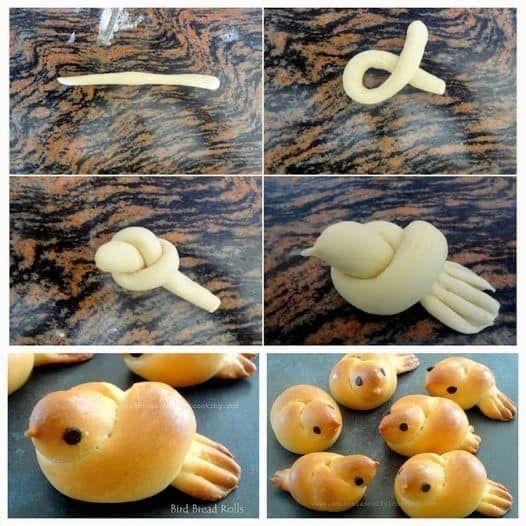
Are we doing it this year?
@labradorduck @msgraveyarddirt
290 notes
·
View notes
Text


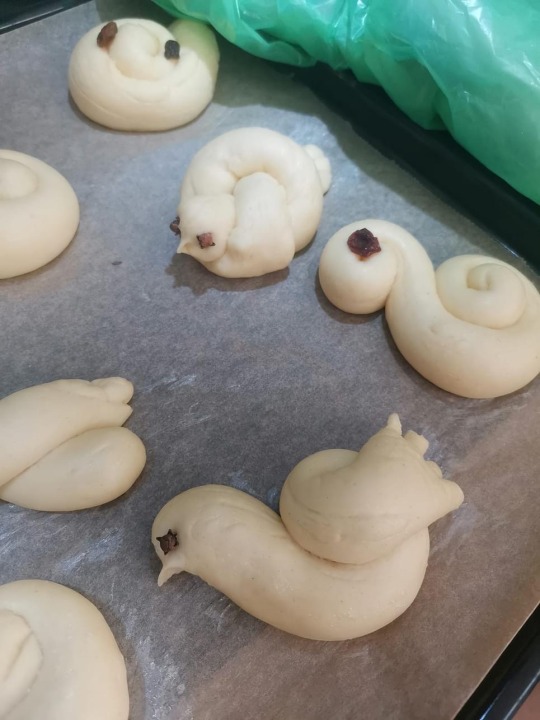

More Easter pastries.
28 notes
·
View notes
Text

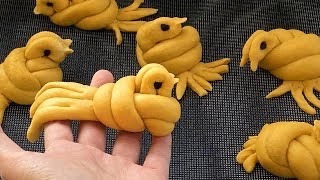

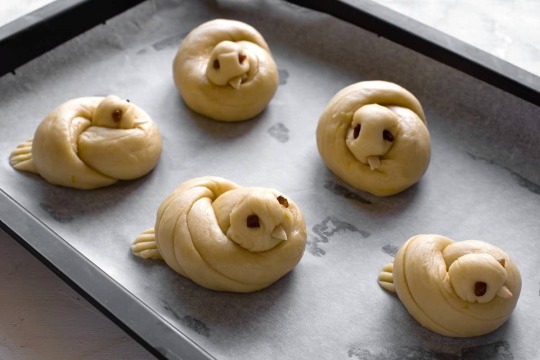

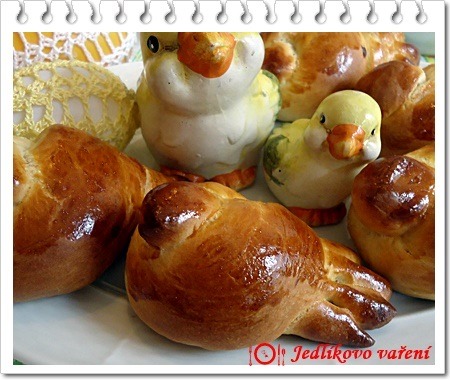
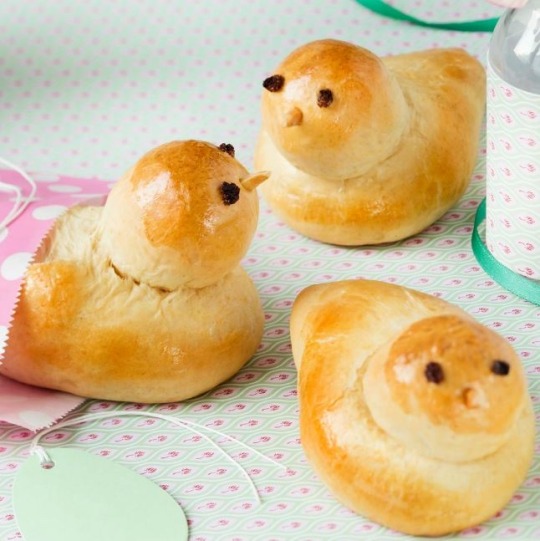
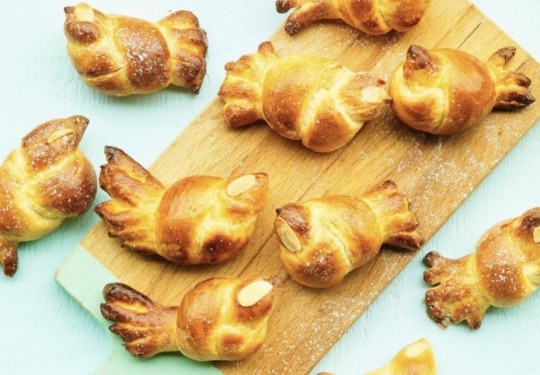
More Easter birdies @msgraveyarddirt @labradorduck
14 notes
·
View notes
Text










Even before the leaves bud out, as the snow begins to thaw, one must invite–indeed coax–the spring to arrive. If one simply waited, Spring (being willful) might not choose to come, and then, with last year’s food bins already almost empty, one could not survive. To bring the spring proactively, Russian mothers baked bird-shaped pastries in early March and their children clambered about setting these little larks and snipes out like duck decoys on the rooftops, fence posts, and snowless patches of ground, hanging them from trees and bushes or even tossing them into the air, meanwhile singing such songs as:
Larks, Larks, Give us Summer, We’ll give you Winter– There’s no food left for us” –“The Dancing Goddesses” by Elizabeth Wayland Barber
11 notes
·
View notes
Text

OMG @graveyarddirt check out these bird pastries made in the Znojmo district ( where my great grandparents are from) in Moravia at Easter! Look familiar????? In a little booklet I found about folk customs in the region.
@msgraveyarddirt ‘s birdies
And some I’ve made in the past:



#in a cross continental partnership bird pastries were being unleashed upon Scotland and Arkansa#bird pastry#Moravia#Znojmo#Ukraine#Slavic#msgraveyarddirt
22 notes
·
View notes
Text

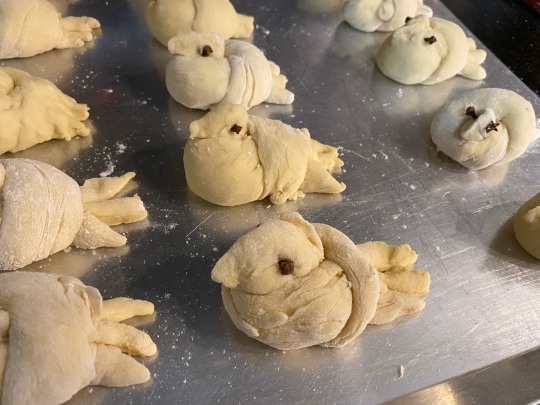


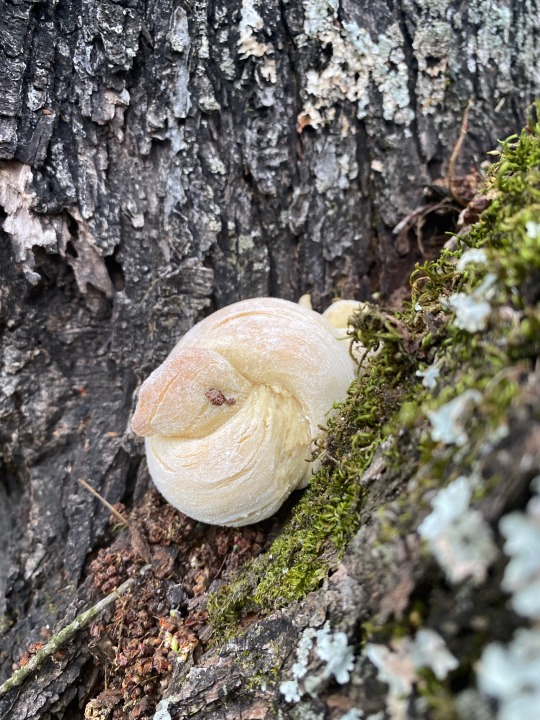

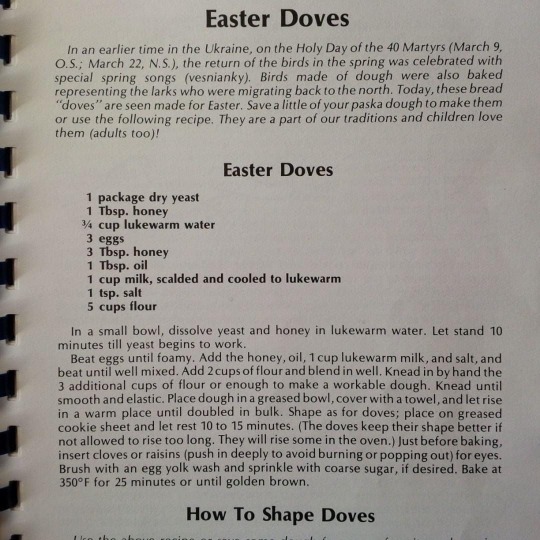
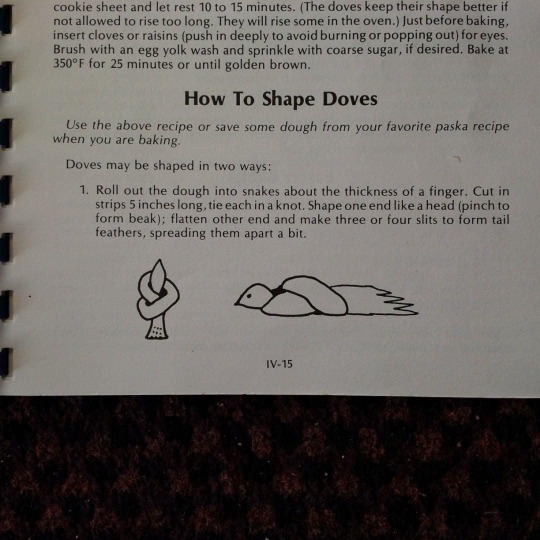
“Even before the leaves bud out, as the snow begins to thaw, one must invite–indeed coax–the spring to arrive. If one simply waited, Spring (being willful) might not choose to come, and then, with last year’s food bins already almost empty, one could not survive. To bring the spring proactively, Russian mothers baked bird-shaped pastries in early March and their children clambered about setting these little larks and snipes out like duck decoys on the rooftops, fence posts, and snowless patches of ground, hanging them from trees and bushes or even tossing them into the air, meanwhile singing such songs as:
Larks, Larks, Give us Summer,
We’ll give you Winter,
There’s no food left for us”
–“The Dancing Goddesses” by Elizabeth Wayland Barber
In an earlier time the Ukraine and other Slavic nations, on the Holy Day of the 40 Martyrs, (March 9, O.S; March 22, N.S.), the return of the birds in the spring was celebrated with special spring songs (vesnianky). Birds made of dough were also baked representing the larks that were migrating back to the north.
I started releasing the birds into the wild with my friend @msgraveyarddirt (who also gave me the above recipe) a few years ago. I was delighted to find this picture in a book on the traditions of the Znojmo region of Moravia (where my great-grandparents are from) earlier this year and realize that the birds are indeed one of those pan Slavic traditions:
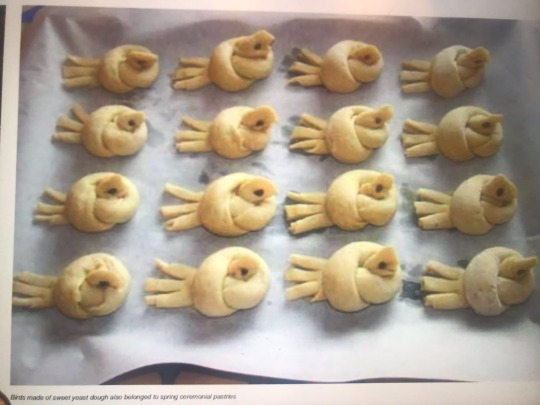
I decided to go ahead and release my birds slightly ahead of the Spring Equinox as spring is coming very quickly here and I didn't want to wait until it was an unseasonal ritual.
These birds are not overly sweet and I removed the cloves after taking the pictures to make them safe for animals.
101 notes
·
View notes
Photo

“Even before the leaves bud out, as the snow begins to thaw, one must invite–indeed coax–the spring to arrive. If one simply waited, Spring (being willful) might not choose to come, and then, with last year’s food bins already almost empty, one could not survive. To bring the spring proactively, Russian mothers baked bird-shaped pastries in early March and their children clambered about setting these little larks and snipes out like duck decoys on the rooftops, fence posts, and snowless patches of ground, hanging them from trees and bushes or even tossing them into the air, meanwhile singing such songs as:
Larks, Larks, Give us Summer,
We’ll give you Winter,
There’s no food left for us”
–“The Dancing Goddesses” by Elizabeth Wayland Barber
I picked up this tradition last year with my friend @graveyarddirt (Check your DMs dear, there are a few unpublished photos).
45 notes
·
View notes
Note
Hi, in your last post you wrote "in a cross continental partnership bird pastries were being unleashed upon Scotland and Arkansas" I'm not really sure what you mean about bird pastries, but are you based in Arkansas?? Sorry if this is a really random ask, but I am on the path of connecting to pagan folk practices and Slavic craft and I'm based in Arkansas and as you can imagine, it's not exactly common here, so to know there's someone on a similar path here in Arkansas would be incredible! Hope you have a good day!
I'm so sorry I am just now seeing this. My phone does not alert me very well to private messages and I'm actually sitting at a PC today. Yes I'm in Arkansas!! I'm in the river valley. My great-grandparents were Moravian and I've really been enjoying delving into Slavic culture and practices.
As far as the bird pastries that is a tradition that is done in the spring in the Ukraine and I was doing it in partnership with my friend who lives in Scotland but is of Ukrainian descent.
So lovely to hear from you and I'm excited to know there is someone else in Arkansas. Sorry again for the late reply!
5 notes
·
View notes